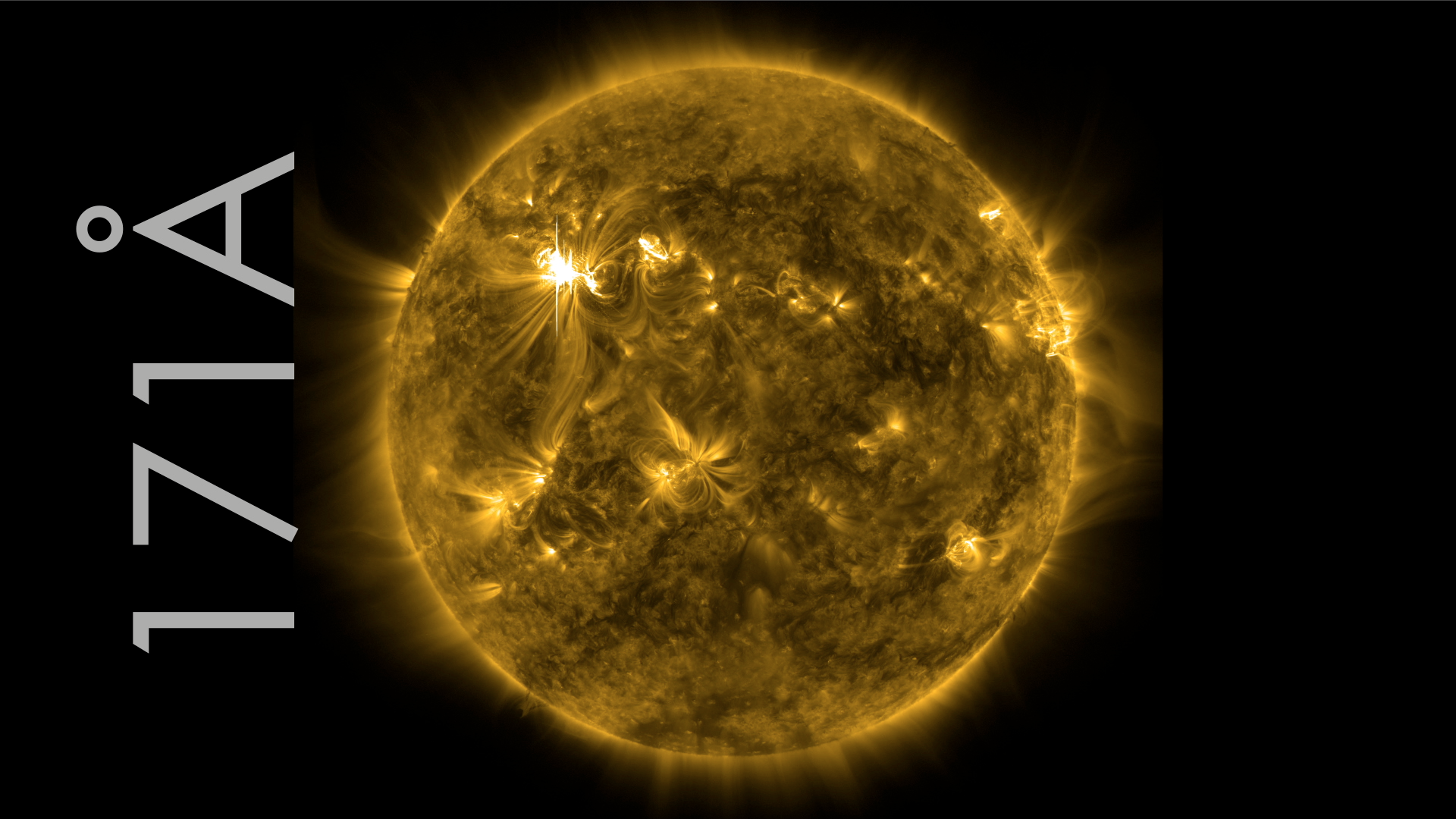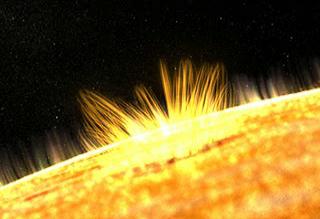Super Hot Tsunami
On March 6, 2012, giant waves known as "solar tsunamis" swept across the sun just after an eruption of an X5.4-class flare, the second largest solar flare since 2006. NASA's Solar Dynamics Observatory (SDO) satellite mapped the evolution of the waves—some stretching across the entire 865,000-mile width of the sun—as they rippled outward from the flare at speeds greater than one million miles per hour. These waves, officially called "EIT waves," may be what triggers fast coronal mass ejections, the spectacular clouds of ejected solar material that sometimes follow a flare, achieve escape velocity and hurtle into space. The video below shows two distinct waves emerging after the flare: the first spreads in all directions; the second is narrower, moving toward the southeast. It is likely that both are connected to one of the two coronal mass ejections spotted about an hour and a half after the eruption.

A large solar flare gives rise to humongous waves on the sun.
See footage of the solar flare and tsunami waves imaged at two different wavelengths.
An artist's rendition of a solar tsunami shows the waves propagating outwards from the flare with immense force.

The NASA/ESA Solar and Heliospheric Observatory captured the first coronal mass ejection (left) and a combined view of both (right).

An EIT wave travels across the upper half of the sun on Aug. 1, 2010, as seen by SDO.
For More Information
See NASA.gov
Credits
Please give credit for this item to:
NASA's Goddard Space Flight Center
-
Animators
- Walt Feimer (HTSI)
- Tom Bridgman (Global Science and Technology, Inc.)
- Scott Wiessinger (USRA)
-
Video editor
- Scott Wiessinger (USRA)
-
Producers
- Scott Wiessinger (USRA)
- Genna Duberstein (USRA)
-
Writer
- Karen Fox (ADNET Systems, Inc.)
Release date
This page was originally published on Thursday, March 22, 2012.
This page was last updated on Wednesday, May 3, 2023 at 1:53 PM EDT.

